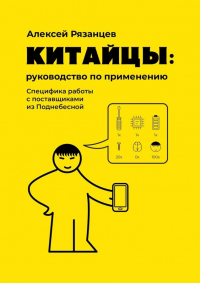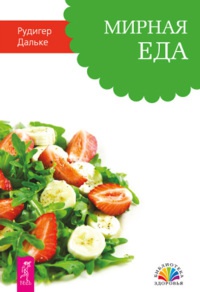Ознакомительная версия. Доступно 26 страниц из 126
of caffeine consumption on delayed conception.” American Journal of Epidemiology 142, no. 12 (1995): 1322–1329; Wilcox, Allen, Clarice Weinberg, and Donna Baird. “Caffeinated beverages and decreased fertility.” The Lancet 332, no. 8626–8627 (1988): 1453–1456.
61. Hatch, Elizabeth E., and Michael B. Bracken. “Association of delayed conception with caffeine consumption.” American Journal of Epidemiology 138, no. 12 (1993): 1082–1092.
62. Lovallo, William R., Thomas L. Whitsett, Bong Hee Sung, Andrea S. Vincent, and Michael F. Wilson. “Caffeine stimulation of cortisol secretion across the waking hours in relation to caffeine intake levels.” Psychosomatic Medicine 67, no. 5 (2005): 734–739; Strauss III, Jerome F., and Robert L. Barbieri (2013). Yen and Jaffe’s Reproductive Endocrinology, 7th edition. Philadelphia, PA: Elsevier Health Sciences, 88–89.
63. Humphries, P., E. Pretorius, and H. Naudé. “Direct and indirect cellular effects of aspartame on the brain.” European Journal of Clinical Nutrition 62 (2008): 451–462.
64. Там же; Chattopadhyay, Sanchari, Utpal Raychaudhuri, and Runu Chakraborty. “Artificial sweeteners – a review.” Journal of Food Sciences and Technology 51, no. 4 (2014): 611–621.
65. Goyal, S.K., and R.K. Goyal. “Stevia (Stevia rebaudiana) a bio-sweetener: a review.” International Journal of Food Sciences and Nutrition 61, no. 1 (2010): 1–10.
66. de Cock, P. “Erythritol functional roles in oral-systemic health.” Advances in Dental Research 29, no. 1 (2018): 104–109.
67. Trinidad, Trinidad P., Aida C. Mallillin, Rosario S. Sagum, and Rosario R. Encabo. “Glycemic index of commonly consumed carbohydrate foods in the Philippines.” Journal of Functional Foods 2, no. 4 (2010): 271–274.
68. Phillips, Katherine M., Monica H. Carlsen, and Rune Blomhoff. “Total antioxidant content of alternatives to refined sugar.” Journal of the American Dietetic Association 109, no. 1 (2009): 64–71.
69. Gill, Jan. “The effects of moderate alcohol consumption on female hormone levels and reproductive function.” Alcohol and Alcoholism 35, no. 5 (2000): 417–423; Schliep, Karen C., Shvetha M. Zarek, Enrique F. Schisterman, Jean Wactawski– Wende, Maurizio Trevisan, Lindsey A. Sjaarda, Neil J. Perkins, and Sunni L. Mumford. “Alcohol intake, reproductive hormones, and menstrual cycle function: a prospective cohort study.” The American Journal of Clinical Nutrition 102, no. 4 (2015): 933–942.
70. Schliep, Karen C., Shvetha M. Zarek, Enrique F. Schisterman, Jean Wactawski-Wende, Maurizio Trevisan, Lindsey A. Sjaarda, Neil J. Perkins, and Sunni L. Mumford. “Alcohol intake, reproductive hormones, and menstrual cycle function: a prospective cohort study.” The American Journal of Clinical Nutrition 102, no. 4 (2015): 933–942.
71. Windham, G.C., E.P. Elkin, S.H. Swan, K.O. Waller, and L. Fenster. “Cigarette smoking and effects on menstrual function.” Obstetrics & Gynecology 93, no. 1 (1999): 61–62.
72. Windham, Gayle C., Patrick Mitchell, Meredith Anderson, and Bill L. Lasley. “Cigarette smoking and effects on hormone function in premenopausal women.” Environmental Health Perspectives 113, no. 10 (2005): 1285–1290.
73. Chavarro, Jorge E., Janet W. Rich-Edwards, Bernard A. Rosner, and Walter C. Willett. “Diet and lifestyle in the prevention of ovulatory disorder infertility.” Obstetrics & Gynecology 110, no. 5 (2007): 1050–1058; Chavarro, Jorge E., Janet W. Rich-Edwards, Bernard A. Rosner, and Walter C. Willett. “A prospective study of dietary carbohydrate quantity and quality in relation to risk of ovulatory infertility.” European Journal of Clinical Nutrition 63, no. 1 (2009): 78–86; Douglas, Crystal C., Leigh E. Norris, Robert A. Oster, Betty E. Darnell, Ricardo Azziz, and Barbara A. Gower. “Difference in dietary intake between women with polycystic ovary syndrome and healthy controls.” Fertility and Sterility 86, no. 2 (2006): 411–417.
74. Chavarro, Jorge E., Janet W. Rich-Edwards, Bernard A. Rosner, and Walter C. Willett. “A prospective study of dietary carbohydrate quantity and quality in relation to risk of ovulatory infertility.” European Journal of Clinical Nutrition 63, no. 1 (2009): 78–86.
75. Chafen, Jennifer J. Schneider, Sydne J. Newberry, Marc A. Riedl, Dena M. Bravata, Margaret Maglione, Marika J. Suttorp, Vandana Sundaram et al. “Diagnosing and managing common food allergies: a systematic review.” JAMA 303, no. 18 (2010): 1848–1856.
76. Agata, Hiroatsu, Naomi Kondo, Osamu Fukutomi, Shinji Shinoda, and Tadao Orii. “Effect of elimination diets on food– specific IgE antibodies and lymphocyte proliferative responses to food antigens in atopic dermatitis patients exhibiting sensitivity to food allergens.” Journal of Allergy and Clinical Immunology 91, no. 2 (1993): 668–679.
77. Ouyang, Xiaosen, Pietro Cirillo, Yuri Sautin, Shannon McCall, James L. Bruchette, Anna Mae Diehl, Richard J. Johnson, and Manal F. Abdelmalek. “Fructose consumption as a risk factor for non-alcoholic fatty liver disease.” Journal of Hepatology 48, no. 6 (2008): 993–999; Zelber-Sagi, Shira, Dorit Nitzan-Kaluski, Rebecca Goldsmith, Muriel Webb, Laurie Blendis, Zamir Halpern, and Ran Oren. “Long term nutritional intake and the risk for non-alcoholic fatty liver disease (NAFLD): a population based study.” Journal of Hepatology 47, no. 5 (2007): 711–717; Thuy, Sabine, Ruth Ladurner, Valentina Volynets, Silvia Wagner, Stefan Strahl, Alfred Königsrainer, Klaus-Peter Maier, Stephan C. Bischoff, and Ina Bergheim. “Nonalcoholic fatty liver disease in humans is associated with increased plasma endotoxin and plasminogen activator inhibitor 1 concentrations and with fructose intake.” The Journal of Nutrition 138, no. 8 (2008): 1452–1455; Maddrey, Willis C. “Alcohol-induced liver disease.” Clinics in Liver Disease 4, no. 1 (2000): 115–131; Lackner, Carolin, Walter Spindelboeck, Johannes Haybaeck, Philipp Douschan, Florian Rainer, Luigi Terracciano, Josef Haas, Andrea Berghold, Ramon Bataller, and Rudolf E. Stauber. “Histological parameters and alcohol abstinence determine long-term prognosis in patients with alcoholic liver disease.” Journal of Hepatology 66, no. 3 (2017): 610–618.
78. Michnovicz, Jon J., Herman Adlercreutz, and H. Leon Bradlow. “Changes in levels of urinary estrogen metabolites after oral indole-3-carbinol treatment in humans.” Journal of the National Cancer Institute 89, no. 10 (1997): 718–723; Michnovicz, Jon J., and H. Leon Bradlow. “Altered estrogen metabolism and excretion in humans following consumption of indole-3-carbinol.” Nutrition and Cancer (1991): 59–66.
79. Surushe, Priyanka, Mayuri Bari, Rahul Hajare, and Anil Chandewar Swapnil Surushe. “Breast cancer and dietary Indole 3 carbinol – a review.” Asian Journal of Pharmacy & Life Science ISSN 2231 (2012): 72–80; Jain, Mohit M., Nirmala Kumari, and Geeta Rai. “A novel formulation of veggies with potent liver detoxifying activity.” International Journal of Computational Biology and Drug Design 8, no. 1 (2015): 75–86.
80. Weng, Jing-Ru, Chen-Hsun Tsai, Samuel K. Kulp, and Ching-Shih Chen. “Indole-3-carbinol as a chemopreventive and anti-cancer agent.” Cancer Letters 262, no. 2 (2008): 153–163.
81. Smith, Alma J., William R.
Ознакомительная версия. Доступно 26 страниц из 126
























